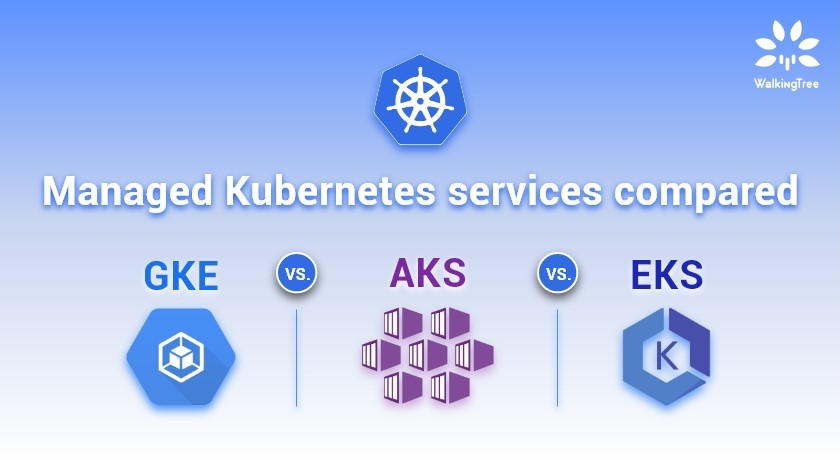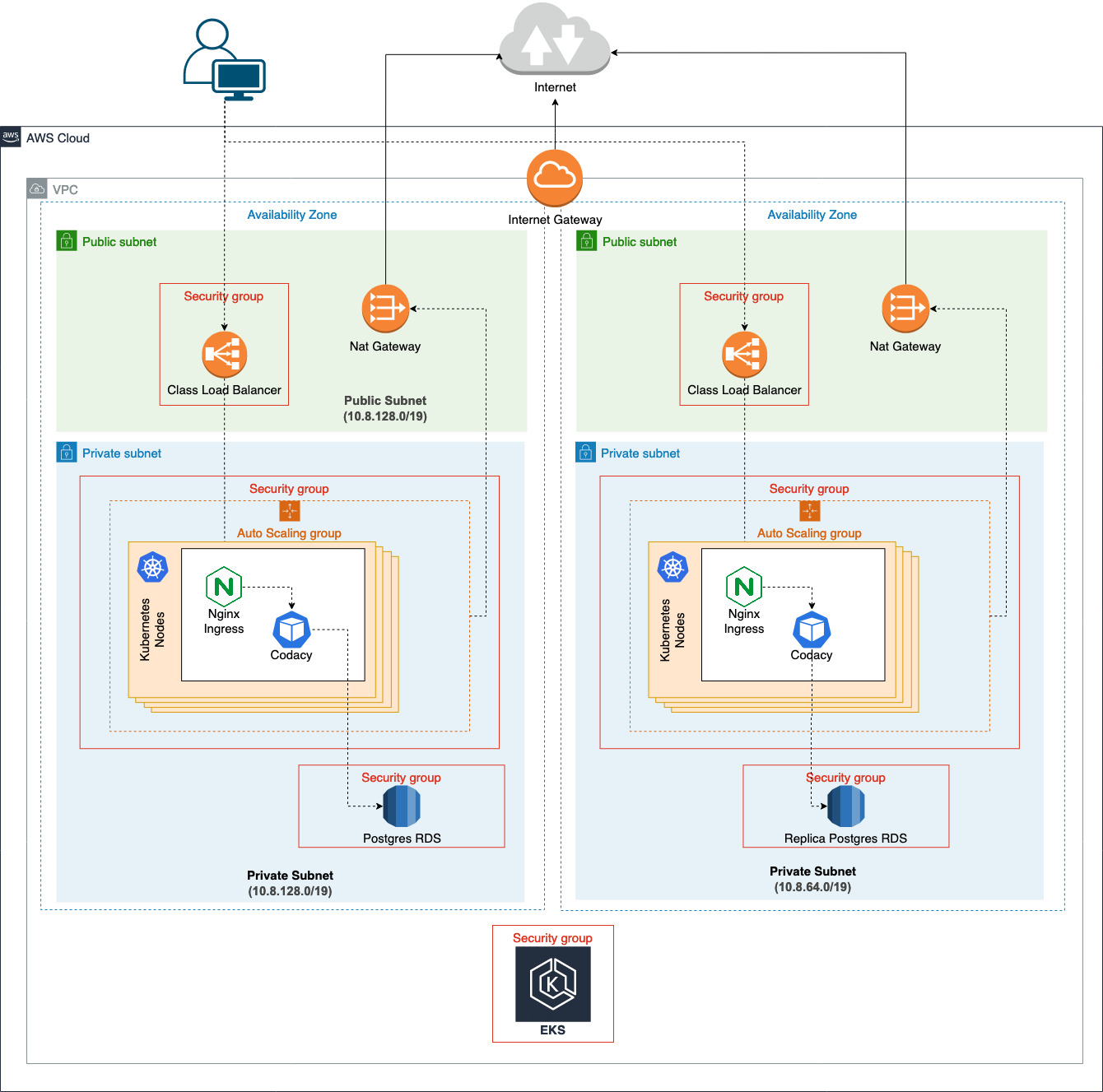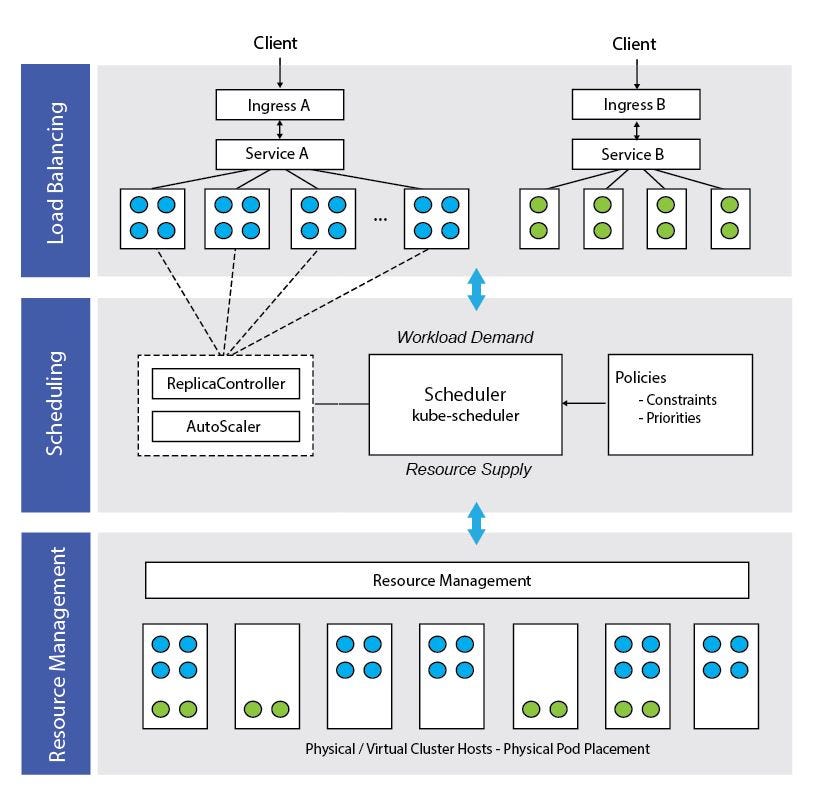What is EKS Kubernetes and Why is it Important?
EKS Kubernetes, also known as Amazon Elastic Kubernetes Service, is a fully managed container orchestration service provided by Amazon Web Services (AWS). It enables businesses to deploy, manage, and scale containerized applications on the AWS cloud easily and securely. Kubernetes is an open-source platform that automates container deployment, scaling, and management, making it a popular choice for businesses of all sizes.
EKS Kubernetes offers several benefits for managing containerized applications, including scalability, reliability, and flexibility. With EKS Kubernetes, businesses can quickly and easily scale their applications up or down based on demand, ensuring optimal performance and reducing costs. EKS Kubernetes also offers high availability, ensuring that applications are always available and accessible to users. Additionally, EKS Kubernetes provides flexibility, allowing businesses to choose the infrastructure and tools that best meet their needs.
EKS Kubernetes is an essential tool for businesses looking to stay competitive in today’s fast-paced digital landscape. By enabling businesses to easily manage and scale containerized applications, EKS Kubernetes helps businesses reduce costs, improve performance, and increase agility. With its robust features and scalability, EKS Kubernetes is an ideal solution for businesses of all sizes looking to leverage the benefits of containerization.
How to Set Up and Configure EKS Kubernetes
Setting up and configuring EKS Kubernetes can be a complex process, but with the right guidance, it can be done quickly and easily. Here are the steps to set up and configure EKS Kubernetes:
1. Prerequisites: Before setting up EKS Kubernetes, ensure that you have an AWS account and have installed the AWS CLI and kubectl command-line tools. Additionally, you should have a basic understanding of Kubernetes and containerization concepts.
2. Create an EKS Cluster: To create a new EKS cluster, log in to the AWS Management Console and navigate to the EKS service. Click on “Create Cluster” and follow the prompts to configure the cluster settings, including the cluster name, node group name, and instance type.
3. Configure Worker Nodes: Once the EKS cluster is created, you need to configure the worker nodes. Worker nodes are the virtual machines that run your containerized applications. To configure worker nodes, you need to create a node group and specify the instance type and number of nodes.
4. Deploy Applications: After configuring the worker nodes, you can deploy your containerized applications. To deploy applications, you can use Kubernetes manifests, which are YAML or JSON files that define the application’s resources and configurations.
5. Verify Cluster Connectivity: Once the applications are deployed, you should verify the cluster connectivity. You can use the kubectl command-line tool to check the cluster status and ensure that the worker nodes are running correctly.
Setting up and configuring EKS Kubernetes requires a good understanding of Kubernetes and containerization concepts. By following the above steps, you can quickly and easily set up and configure EKS Kubernetes and start managing your containerized applications.
Best Practices for Managing EKS Kubernetes Clusters
Managing EKS Kubernetes clusters requires careful planning and execution. Here are some best practices for managing EKS Kubernetes clusters:
1. Monitoring: Monitoring is critical for ensuring the health and performance of EKS Kubernetes clusters. You should monitor the cluster’s resources, such as CPU, memory, and network usage, and set up alerts for any anomalies. You can use tools such as Prometheus, Grafana, and Amazon CloudWatch for monitoring.
2. Logging: Logging is essential for troubleshooting and debugging issues in EKS Kubernetes clusters. You should collect and analyze logs from all cluster components, including nodes, pods, and containers. You can use tools such as Fluentd, Elasticsearch, and Kibana for logging.
3. Security: Security is a critical aspect of managing EKS Kubernetes clusters. You should ensure that the cluster is secure by implementing network policies, role-based access control (RBAC), and encryption. You should also keep the cluster up-to-date with the latest security patches and updates.
4. Performance Optimization: Optimizing the performance of EKS Kubernetes clusters is essential for ensuring that applications run smoothly. You should optimize the cluster’s resources, such as CPU, memory, and network usage, and use tools such as Kubernetes Horizontal Pod Autoscaler (HPA) and Cluster Autoscaler for automatic scaling.
5. High Availability: Ensuring high availability of EKS Kubernetes clusters is critical for business continuity. You should use multiple availability zones and implement automatic failover and disaster recovery mechanisms.
By following these best practices, you can ensure that your EKS Kubernetes clusters are secure, performant, and highly available. Additionally, you can maintain a secure environment, optimize cluster performance, and ensure high availability.
Real-World Applications of EKS Kubernetes
EKS Kubernetes has become increasingly popular in recent years, and many businesses have successfully implemented it to manage their containerized applications. Here are some real-world applications of EKS Kubernetes:
1. Finance: Financial institutions such as banks and insurance companies have adopted EKS Kubernetes to manage their containerized applications. EKS Kubernetes provides the scalability, reliability, and flexibility required to handle the complex workloads of the finance industry. For example, Capital One has implemented EKS Kubernetes to manage its cloud-native applications, resulting in improved efficiency and cost savings.
2. Healthcare: Healthcare organizations have also adopted EKS Kubernetes to manage their containerized applications. EKS Kubernetes provides the security and compliance required to handle sensitive patient data. For example, a large hospital chain in the United States has implemented EKS Kubernetes to manage its electronic health records, resulting in improved patient care and reduced costs.
3. Retail: Retail companies have adopted EKS Kubernetes to manage their containerized applications, including e-commerce platforms and inventory management systems. EKS Kubernetes provides the scalability and reliability required to handle the high traffic and demand of the retail industry. For example, a large e-commerce company in Europe has implemented EKS Kubernetes to manage its online store, resulting in improved performance and customer satisfaction.
By implementing EKS Kubernetes, these businesses have experienced numerous benefits, including improved efficiency, cost savings, and increased agility. EKS Kubernetes provides the flexibility and scalability required to manage complex workloads, making it an ideal solution for businesses in various industries.
Comparing EKS Kubernetes to Other Container Orchestration Platforms
EKS Kubernetes is not the only container orchestration platform available in the market. There are other platforms such as Docker Swarm and Apache Mesos that also provide container orchestration capabilities. Here’s a comparison of EKS Kubernetes with these platforms:
1. Docker Swarm: Docker Swarm is a container orchestration platform that is built into the Docker engine. It is a simple and lightweight platform that is easy to set up and use. However, it lacks some of the advanced features and scalability of EKS Kubernetes. EKS Kubernetes is a better choice for businesses that require advanced features and scalability.
2. Apache Mesos: Apache Mesos is a distributed systems kernel that can manage resources in a data center or cloud environment. It provides a platform for running and managing containerized applications. While it is a powerful platform, it requires a steep learning curve and is more complex to set up and use than EKS Kubernetes. EKS Kubernetes is a better choice for businesses that require a simpler and more user-friendly platform.
When to use EKS Kubernetes, Docker Swarm, or Apache Mesos depends on the specific needs and requirements of the business. EKS Kubernetes is a better choice for businesses that require advanced features and scalability, while Docker Swarm is a better choice for businesses that require a simple and lightweight platform. Apache Mesos is a better choice for businesses that require a powerful and flexible platform, but are willing to invest in the time and resources required to set it up and use it.
Troubleshooting Common EKS Kubernetes Issues
Even though EKS Kubernetes is a robust and reliable platform, issues can still arise. Here are some common EKS Kubernetes issues and how to troubleshoot them:
1. Cluster Connectivity: One of the most common issues with EKS Kubernetes is cluster connectivity. If you are unable to connect to the cluster, check the following:
- Ensure that the kubeconfig file is correctly configured.
- Check that the cluster endpoint is correct.
- Verify that the security group rules allow traffic to the cluster endpoint.
2. Resource Allocation: Another common issue is resource allocation. If the cluster is running out of resources, you may experience issues with application deployment. Here are some tips to optimize resource allocation:
- Use Kubernetes Horizontal Pod Autoscaler (HPA) to automatically scale the number of pods based on resource usage.
- Use Kubernetes Cluster Autoscaler to automatically scale the number of nodes based on resource usage.
- Monitor resource usage and adjust the resource requests and limits accordingly.
3. Application Deployment: Issues may also arise during application deployment. Here are some tips to troubleshoot application deployment issues:
- Check the application logs for any errors or issues.
- Verify that the application image exists and is accessible.
- Ensure that the application manifest file is correctly configured.
By following these troubleshooting tips, you can quickly diagnose and resolve common EKS Kubernetes issues. It is also recommended to have a monitoring and logging strategy in place to proactively detect and address any issues before they impact the cluster performance and availability.
Future Trends in EKS Kubernetes and Container Orchestration
Container orchestration technologies such as EKS Kubernetes have revolutionized the way businesses manage containerized applications. As we look to the future, there are several trends that are likely to impact the way businesses use EKS Kubernetes and other container orchestration platforms.
1. Machine Learning and Artificial Intelligence: Machine learning and artificial intelligence are becoming increasingly important in modern IT infrastructure. EKS Kubernetes provides several tools and features that make it easier to deploy and manage machine learning and AI workloads. For example, EKS Kubernetes provides support for GPU-enabled instances, which are ideal for machine learning and AI workloads.
2. Edge Computing: Edge computing is another trend that is likely to impact the way businesses use EKS Kubernetes. Edge computing involves processing data closer to the source, rather than sending it to a central data center or cloud. EKS Kubernetes provides several features that make it easier to deploy and manage edge computing workloads, including support for lightweight Kubernetes distributions and automated deployment and scaling.
3. Multi-Cloud and Hybrid Cloud: Multi-cloud and hybrid cloud environments are becoming increasingly popular in modern IT infrastructure. EKS Kubernetes provides several features that make it easier to deploy and manage containerized applications in multi-cloud and hybrid cloud environments. For example, EKS Kubernetes provides support for multiple cloud providers and on-premises environments, as well as automated deployment and scaling.
4. Security: Security is a critical concern in modern IT infrastructure. EKS Kubernetes provides several features that make it easier to secure containerized applications, including network policies, role-based access control, and automated security updates.
By staying up-to-date with these trends, businesses can ensure that they are making the most of their EKS Kubernetes and container orchestration technologies. By deploying and managing containerized applications in a scalable, reliable, and flexible way, businesses can stay competitive in today’s fast-paced digital landscape.
Conclusion: The Value of EKS Kubernetes in Modern IT Infrastructure
In today’s fast-paced digital landscape, businesses need to be able to deploy and manage containerized applications in a scalable, reliable, and flexible way. This is where EKS Kubernetes comes in. EKS Kubernetes is a powerful container orchestration platform that provides several benefits for managing containerized applications, including scalability, reliability, and flexibility.
Setting up and configuring EKS Kubernetes can be a complex process, but with the right guide, it can be done efficiently and effectively. By following best practices for managing EKS Kubernetes clusters, businesses can ensure high availability, optimize cluster performance, and maintain a secure environment. Real-world applications of EKS Kubernetes show that it can be used in various industries such as finance, healthcare, and retail, providing companies with numerous benefits.
Compared to other container orchestration platforms such as Docker Swarm and Apache Mesos, EKS Kubernetes has its strengths and weaknesses. However, its extensive features and capabilities make it a popular choice for many businesses. As EKS Kubernetes continues to evolve, we can expect to see advancements in machine learning, artificial intelligence, and edge computing, which will further impact the way businesses manage containerized applications.
In conclusion, businesses need to adopt container orchestration technologies to stay competitive in today’s digital landscape. EKS Kubernetes is a powerful and flexible container orchestration platform that provides several benefits for managing containerized applications. By following best practices and staying up-to-date with the latest trends, businesses can ensure that they are making the most of their EKS Kubernetes and container orchestration technologies.






